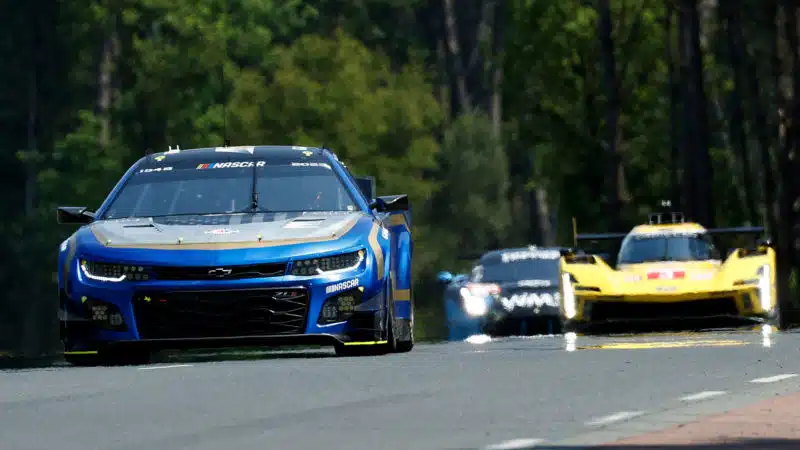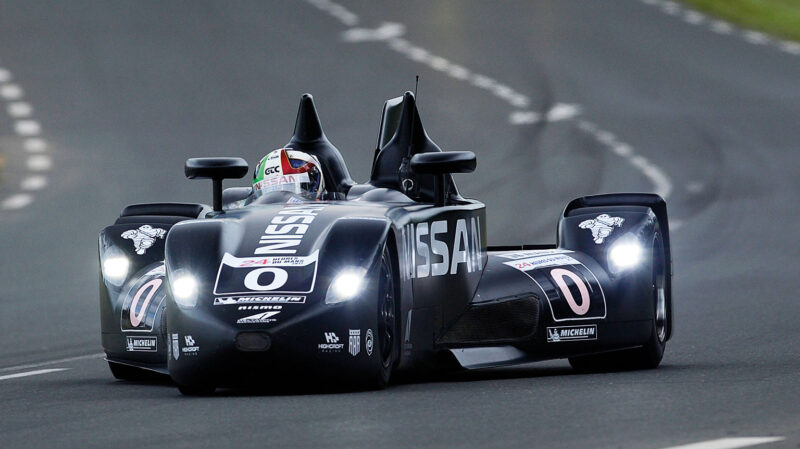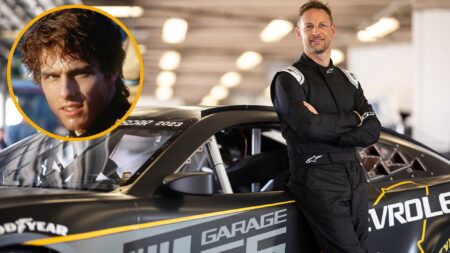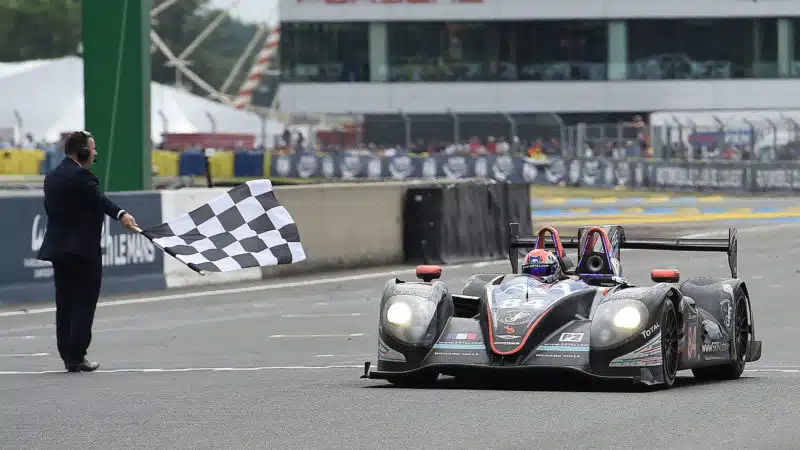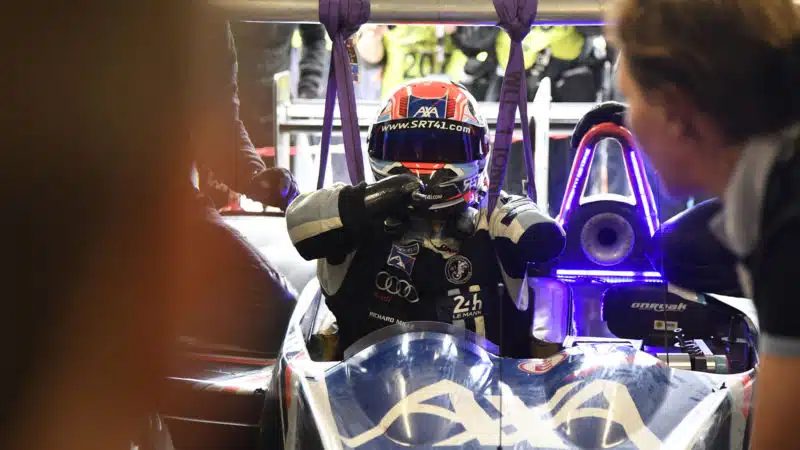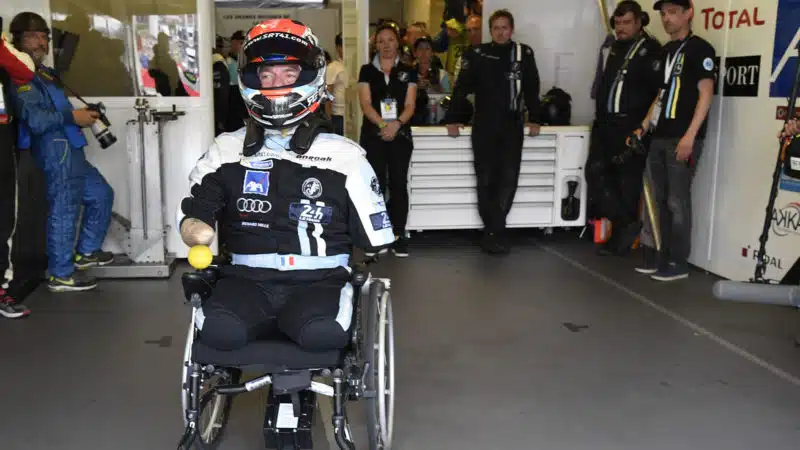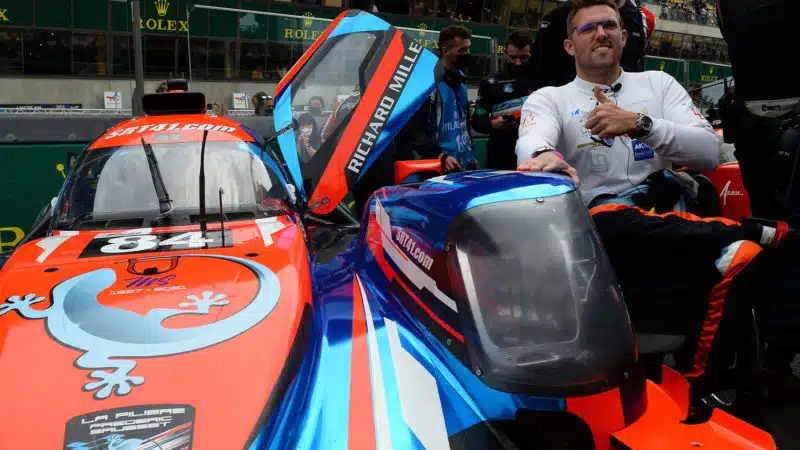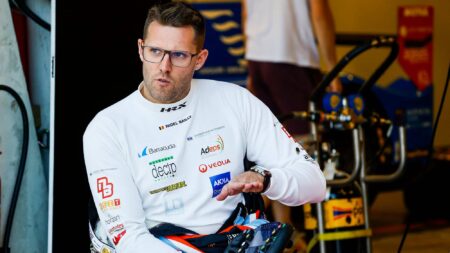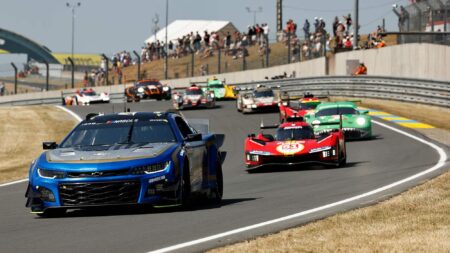Originally conceived as a submission for the 2012 IndyCar design tender process (which ultimately went to the Dallara DW12, still used today), Bowlby, with backing from Nissan, Don Panoz and Chip Ganassi, changed tack and went to Le Mans for 2012.
With Garage 56 running for the first time, the Deltawing made it into the field, qualifying a respectable 29th with Marino Franchitti, Michael Krumm and Satoshi Motoyama at the wheel – faster than some LMP2 cars.
However, the Deltawing was eliminated on lap 75 at the Porsche curves after colliding with Kazuki Nakajima’s Toyota LMP1 car.
2014 – ZEOD RC
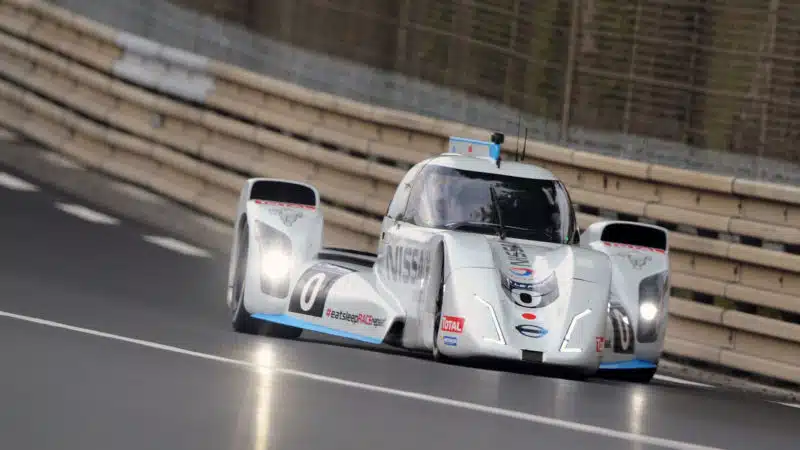
DeltaWing morphed into ZEOD RC
Getty Images
Not to be deterred, 2014 saw the entry of the ZEOD RC, Ben Bowlby’s successor to his Deltawing.
Using a chassis similar to its predecessor, the car was powered by a hybrid electric drivetrain with lithium-ion batteries, with an output of 220kW (295bhp). Accompanying it was a 400bhp three cylinder combustion engine.
The car performed reasonably in qualifying, setting 27th-fastest time, and managed to set a lap using purely electric power in the warm-up. However, a gearbox issue meant the car promptly conked out on lap five of the race.
Panoz and Ganassi sued Bowlby over use of intellectual property, with the matter eventually settled out of court.
